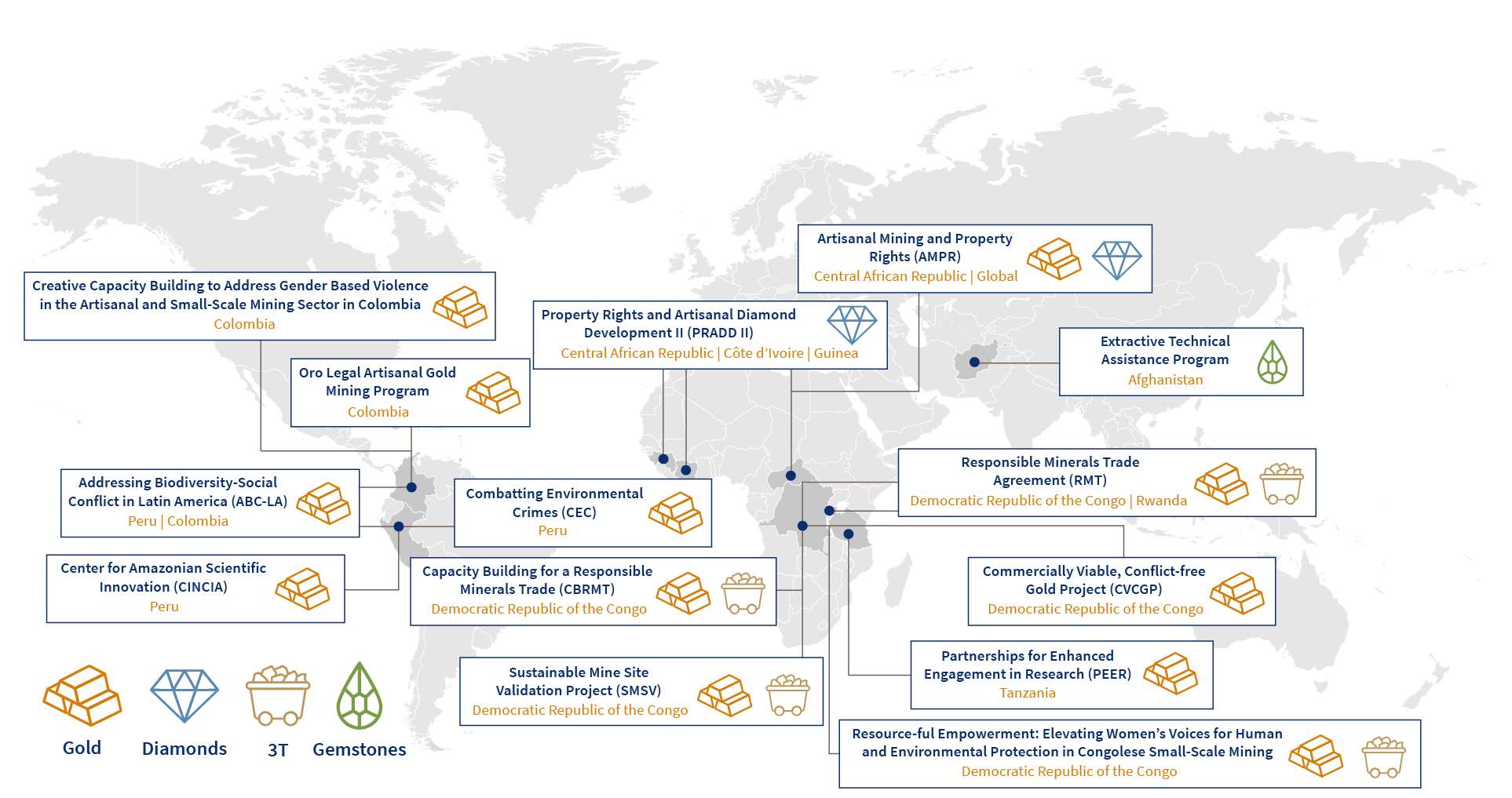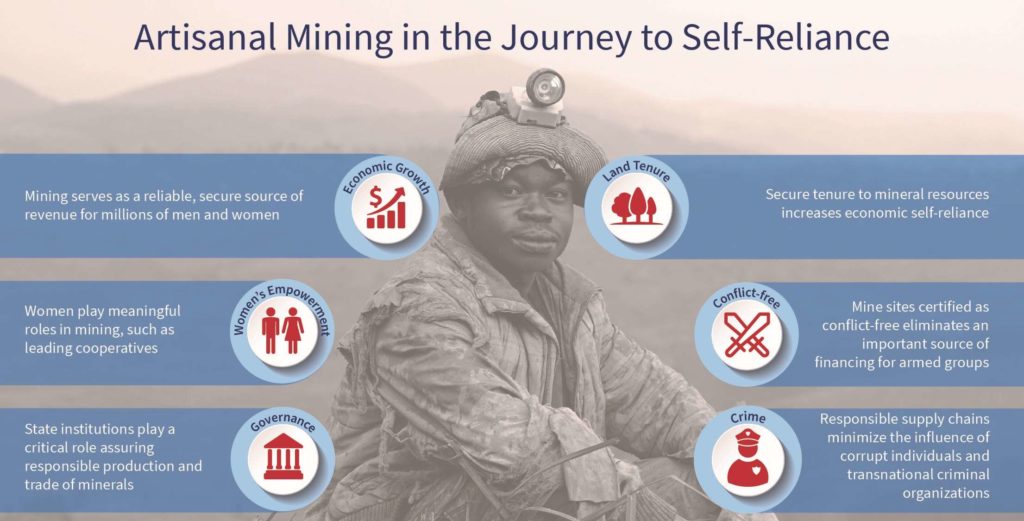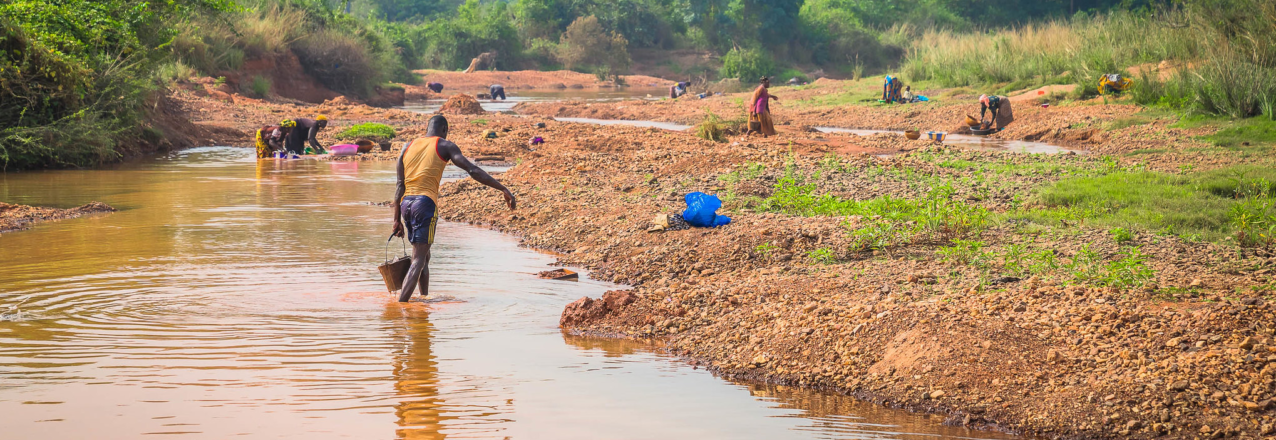This Issue Brief outlines the relationship between artisanal and small-scale mining and development, describes USAID’s programs, highlights illustrative best practices, and shares key resources.
Summary
Approximately 40 million people worldwide work in artisanal and small-scale mining (ASM), which describes mining conducted by individuals, families, or groups using rudimentary and often non- mechanized processes to extract minerals or gems. An additional three to five times that number receive support from the ASM sector indirectly (Buxton, 2013; World Bank, 2019). Thus, more than 300 million people in more than 70 countries depend directly and indirectly on artisanal mining to provide for themselves and their families (Stocklin-Weinberg et. al 2019).
Accounting for approximately 20 percent of the world’s production of gold, diamonds, tin, and tantalum, and 80 percent of colored gemstones, ASM is a major source of minerals for electronics, investment (in the case of gold), and jewelry (IGF, 2017). ASM has economic potential but also many challenges, such as environmental degradation; uneven distribution of benefits; conflicting claims to resource rights; illicit trade, armed conflict, corruption, human rights, and labor violations; and discriminatory practices. To achieve its potential as a driver of sustainable social and economic development, the United States Agency for International Development (USAID) supports formalization and regulation of ASM.
Formalization of the ASM sector aims to ensure “responsible” artisanal minerals production and trade through transparency, due diligence, and compliance with legal frameworks. This includes the active management of risks such as avoidance of human rights abuses, financing of terrorism, money laundering, and public corruption (OECD 2016; RAGS Forum, 2018). A formalized and well-regulated ASM sector can be a powerful engine for economic growth for men and women and an important source of domestic resource mobilization for developing countries. Importantly, formalization can help address problems that sometimes characterize ASM, such as human rights abuses and the use of minerals to finance conflict, armed groups, criminal networks, and terrorist organizations (OECD, 2016).
USAID works with partner countries to formalize and regulate ASM gold; diamonds; tin, tantalum, and tungsten; and semi-precious stones. USAID programs foster ASM supply chains that are not only legal, but also environmentally and socially responsible. USAID is working closely with the US Departments of State, Labor, and Commerce; the US Geologic Survey (USGS); and the Environmental Protection Agency to tackle the complex array of ASM-related development challenges. Since 2014, USAID has implemented 14 projects with an ASM focus in Africa, Latin America, and Central Asia (see map graphic), and ASM is an integral component of at least four additional projects. USAID’s ASM-related projects are cross-sectoral in nature and advance a variety of development goals, such as economic growth, women’s economic empowerment, the environment, land tenure, governance, peace, justice, and human rights.
USAID Artisanal and Small-Scale Mining Activities (2014–2020)

In recognition of the permanent and growing nature of the ASM sector and the vital role it plays in the journey to self-reliance for millions of men and women, USAID continues to address ASM’s development challenges. Through innovative solutions in partnership with the US Government (USG), civil society, and private sector partners, USAID is helping improve ASM, through respect of women’s rights, rule of law, environmental considerations, property rights, peace, justice, security, and human and labor rights.
Artisanal Mining in the Journey to Self-Reliance



